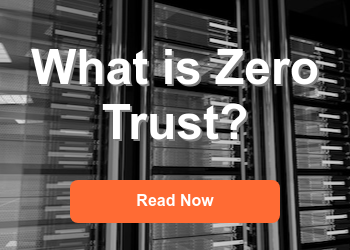Microsegmentation, Explained: A Comprehensive Guide
This article is part of our series on Zero Trust. For more information on Zero Trust, check out Zero Trust, Explained.
What Is Microsegmentation?
Microsegmentation is a cybersecurity strategy that divides networks into secure zones by applying security controls at the individual workload level, allowing organizations to isolate and protect critical assets with granular precision. Unlike traditional network segmentation that creates broad network divisions, microsegmentation creates security perimeters around individual applications, workloads, or even specific services.
Think of microsegmentation like creating secure rooms within a building rather than just securing the building's outer perimeter. This approach significantly enhances security by containing threats and preventing lateral movement within your network.
Understanding Segmentation: The Foundation of Microsegmentation
Before diving deeper into microsegmentation, let's establish what segmentation means in cybersecurity.
Segmentation simply means dividing networks into smaller groups with similar functions or security requirements. It's similar to customer segmentation in marketing, where customers are grouped by similar behaviors or demographics to create targeted messaging.
In cybersecurity, segmentation has a parallel purpose: making security control and visibility more powerful and effective. For example, network segmentation divides networks into smaller segments serving similar applications, forcing traffic between segments through specific points for security inspection or policy enforcement.
Key Benefits of Segmentation and Microsegmentation
Implementing segmentation—especially microsegmentation—provides several critical security advantages:
- Attack surface reduction: Attackers with access to one segment cannot easily probe for vulnerabilities or launch attacks against assets in another segment
- Faster threat detection: Increased visibility in segmented networks raises the likelihood that attackers probing your network will trigger alerts
- Effective attack containment: Attacks like ransomware that affect one segment cannot spread to others
- Accelerated recovery: Containment significantly speeds up service restoration by limiting the number of affected systems
The Evolution of Segmentation Approaches
Let's explore how segmentation has evolved from basic to advanced approaches:
1. No Segmentation: The Flat Network
Many corporate networks began as "flat networks" - environments with no segmentation at all. While convenient to set up and manage, flat networks create significant security vulnerabilities:
- Once network access is granted, users can potentially access all corporate applications and data
- Security becomes highly reactive - you're in a race against time once threats enter your network
- Attacks can spread rapidly with few barriers to lateral movement

"Flat" network: everything is connected
2. Physical Segmentation: The Air Gap
At the opposite end of the spectrum is physical segmentation or "air-gapping," where networks have no physical connection to each other:
- Threats like ransomware cannot directly cross air-gaps
- Determined attackers may still reach air-gapped machines through non-network means (like USB drives)
- For practical purposes, no communication exists between physically segmented networks
- While highly secure, this approach severely limits operational flexibility

Physical segmentation: the two networks are disconnected
3. Network Segmentation: The Logical Boundary
Network segmentation uses infrastructure tools to create logical, rather than physical, gaps between networks:
- Tools include firewalls and access control lists (ACLs) on switches
- Segments remain relatively large, limiting security benefits
- Implementation is complex, tedious, and often disruptive to applications
- "Holes" created for business applications tend to accumulate over time, degrading effectiveness

Network Segmentation: networks are logically separated by the firewall
4. Microsegmentation: The Zero-Trust Approach
Microsegmentation addresses the limitations of traditional network segmentation by:
- Adding security policy enforcement in front of each workload
- Dramatically restricting lateral movement of threats
- Automating the management of fine-grained security policies
- Operating at a much more granular level than traditional segmentation

Microsegmentation: each workload is individually protected
How Microsegmentation Works
Microsegmentation can be implemented through several methods:
- Agent-Based Approaches
- Software agents installed on each protected workload
- Scales effectively across environments
- Functions independently of network implementation
- Preferred for most enterprise environments
- Agentless Approaches
- Programming switch ACLs and firewall rules directly
- Using gatekeeper appliances at the workload edge
- Can affect operational practices but may be necessary in some environments
Microsegmentation is often discussed in directional terms:
- "North-south" refers to remote access traffic
- "East-west" refers to lateral network traffic
Microsegmentation vs. Software-Defined Perimeters for Zero Trust
While closely related, microsegmentation and Software-Defined Perimeters (SDP) have distinct origins and purposes:
Microsegmentation Origins:
- Initially designed for datacenter administrators
- Created to manage datacenter traffic without needing to know what applications were running
- Typically deployed at scale across entire environments
Zero Trust Software-Defined Perimeters:
- Specifically tailored for implementing Zero Trust Architectures like NIST SP800-207
- Designed to define an Implicit Trust Zone with a new perimeter
- Often applied to protect specific, known resources
- Can be more cost-effective for targeted Zero Trust implementations
The key differentiator is enforcement capability. For example, an intrusion detection system (IDS) in front of every workload would be considered microsegmentation, but it would not be capable of creating the NIST 800-207 Implicit Trust Zone.
Implementing Microsegmentation: Key Considerations
When planning your microsegmentation strategy, consider these factors:
- Application Discovery: Thoroughly understand your application dependencies before implementing
- Policy Creation: Start with broad policies and gradually refine them
- Testing: Implement in monitoring mode before enforcement
- Automation: Leverage automation to manage the complexity of fine-grained policies
- Integration: Ensure compatibility with existing security tools and processes
Real-World Success with Microsegmentation
Organizations across industries have successfully implemented microsegmentation to enhance their security posture:
- Financial institutions use microsegmentation to isolate payment processing systems
- Healthcare providers protect patient data by segmenting clinical and administrative systems
- Retailers secure point-of-sale systems from other network traffic
- Manufacturing companies isolate industrial control systems from corporate networks
Glossary of Key Terms
- ACL (Access Control List): Rules that control network traffic based on specific criteria
- East-West Traffic: Communication between servers within the same network
- North-South Traffic: Communication entering or leaving the network
- VLAN (Virtual Local Area Network): A logical subdivision of a network
- VXLAN (Virtual Extensible LAN): An overlay network that extends Layer 2 segments over Layer 3 infrastructure
- Zero Trust: A security model that assumes no user or system should be trusted by default
Conclusion: The Future of Network Security
Microsegmentation represents a fundamental shift in network security strategy—moving from broad perimeter defenses to granular, workload-level protection. As cyber threats grow more sophisticated, the ability to contain and control access at the micro level becomes increasingly crucial.
For organizations beginning their microsegmentation journey:
- Start with critical assets and high-value applications
- Implement in phases, beginning with monitoring before enforcement
- Leverage automation to manage complexity
- Consider integration with your Zero Trust strategy
By implementing microsegmentation properly, organizations can significantly reduce their attack surface, improve threat detection, contain attacks more effectively, and recover more quickly when incidents occur.
Ready to explore microsegmentation for your organization? Contact our security team to discuss how this approach can enhance your cybersecurity posture.
For a detailed overview of the broader Zero Trust movement and its benefits, check out our resource, Zero Trust, Explained.
Zentera’s CoIP Platform combines both microsegmentation and Zero Trust Network Access (ZTNA) capabilities. This enables organizations to take advantage of features such as Application Chambers and Application Networks to reduce their attack surface, while maintaining operational flexibility.
|
Who Can Benefit from Microsegmentation?
Microsegmentation solutions are targeted for large datacenters. Their feature set, workflow, and business models are aligned with large deployments.
But nearly every organization has critical assets and data that, should they be lost due to a cyber attack, would significantly threaten business continuity – even small businesses have databases of client information. These days, a cyber attack is no longer a question of “if” - it’s “when.” These companies should look for SDP solutions which can help implement a NIST 800-207 Zero Trust Architecture.




